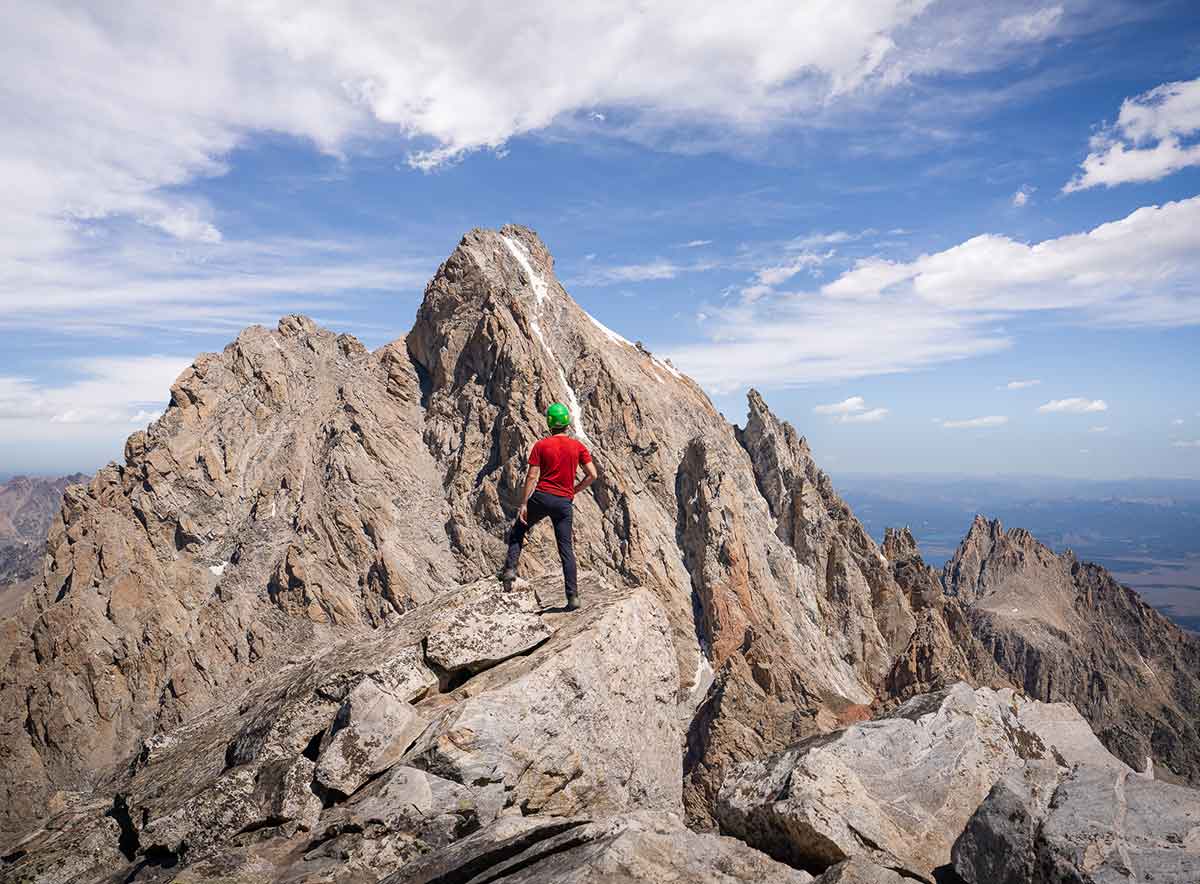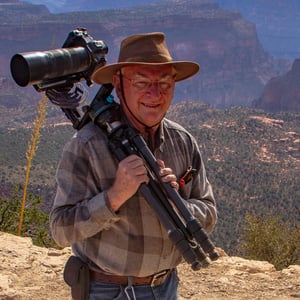You've found
the highest resolution
photographs ever created.
New Releases
VAST photos are the highest resolution photographs ever made. Learn more. Scroll down to explore the latest ultra-high-resolution photos our artists have created. For special early access to VAST photos and an instant 10% discount, click to join our newsletter.
Follow us for the latest beautiful VAST photos:
John Freeman
Sprague Lake in Morning Light
I had arrived at Sprague Lake before sunrise to shoot some panoramas. There wasn't a breath of a breeze this particular morning. I shot a couple previous to this one but I liked this one because the sun was illuminating the pine trees that are on the western side of the lake. 12,720-foot Hallett Peak is the prominent mountain in the center of the photo.
Sprague Lake is a popular destination within Rocky Mountain National Park because over the past 10 years the moose population on eastern side of the park has grown significantly. Moose love this lake because it is only about 3 feet deep and the lake bottom has lots of mosses and water plants that the moose love to eat. The morning I was there 3 moose crossed the lake while I was shooting my photos.
Jeff Lewis
Manhattan Sunrise
I spend the bulk of my time pursuing views that are unique and rarely if ever seen elsewhere. This is not one of those views. In those cases, I have a motto: if you're gonna do a classic, do it well!
This location was recommended to me by none other than Dan Piech, founder of VAST! If Dan tells you that you gotta see this view, well, you gotta go see it!
I only had four days in the city, and I am NOT a morning person, so how would I know which day to wake up? Well... I'm a meteorologist, so I have the cheat codes! I was able to forecast an incredible sunrise on this morning, so I knew this would be the day to set an early alarm. When I woke up in pitch black and verified that everything was on track, I hopped on the subway and, after running all around the terminal trying to find the correct gate for the bus to the Jersey side (it was my first time, ok?!) I found it just in time and made it over here just as the sky was starting to light up. It took my breath away! Because I had a full day of urban adventure ahead (read: eating bagels, pastrami, and cheesecake), I opted to not bring my tripod at all, even for taking sunrise photos. Thankfully there was a nice railing for me to balance my camera on while I carefully took the frames to put together this VAST photo!
John Freeman
Park Avenue
This location is one of the first stops many visitors make as they enter the park. Shaded in the late afternoon, even on a hot summer’s day, it is a cool location to take an evening walk down this grand boulevard of rock.
In this scene you see a trio of three walking down the trail that descends steeply into a spectacular canyon and continues to Courthouse Towers. Early on you will pass beneath a formation called Queen Nefertiti, a sculpted rock formation atop the west wall that looks like the profile of an Egyptian Queen. Sheer cliffs capped with fins soar above the east side of the canyon. As you progress through the wash views open to Argon Tower, a 270-ft. tower at the end of the west wall, and the Organ, rising above the east side of the Scenic Drive. Near the end of the hike the Three Gossips, a striking 350-ft tall tower with three summits sitting atop a sandstone pedestal, joins the scene
John Freeman
Sunset on the Sneffels Range
Mt. Sneffels, stands prominent in the warm sunset light skirted by golden aspens. Mt. Sneffels is one of thirty two 14,000+ ft. peaks in Colorado.
The setting October sun illuminated the valley with magical Golden Hour light. That same light lit up the many groves of aspens that were at the peak of their fall colors too. This vantage point allowed me to capture the entire San Juan range that can be see from 50-60 miles to the north of Ridgway.
The fall of 2020 we were in the Ridgway area for our semi-annual fall colors photography trip. We had lunch with a friend and former co-worker who lives in the area and he mentioned to me that the ridge northwest of Ridgway had some excellent views of the San Juan/Sneffels Range. He provided me with some GPS locations of some of his favorite viewpoints and we made a point of visiting those locations and the view was spectacular. So much so that we made a special trip back for a sunset shot of the Sneffels Range. Wanting to capture this is as high a resolution wall mural as possible I used a Canon R series 100-400mm f/5.6-8 IS USM zoom lens at 400mm.
John Freeman
Last Light at Green River Overlook
My wife Jean and I had spent the evening here at the Green River Overlook. I had shoot several panoramas from this area. It was starting to get late and I had packed up my gear in preparation to go to Mesa Arch for a Moon rise shot. I walked back to the spot where Jean had been sitting reading her book and as I looked back at the view I realized I had nearly missed the best composition and light of the evening. I quickly sat up my gear again and started shooting. With the beautiful Cedars in foreground I knew I had to do a focus bracketed set. I also knew that this special light was only going to last 8-10 minutes at the best. It is at times like this that the years of experience count because the changing light was not going to last long and I had to work quickly.
From this overlook one can trace some 15-20 miles of the White Rim Trail as it snakes its way through the desert. The White Rim Trail is a 97 mile long back country 4x4 trail popular with Jeep owners and mountain bikers. My wife and I did about 1/2 of the trail in June of 2020 with another couple. We camped at the Murphys Hogback campground which can be view in the third for left close up view.
Jerred Zegelis
Two Horses in Colorado
Beneath the vast Colorado sky, two horses graze quietly in golden prairie grass, dwarfed by the immense mountain range that rises behind them.
This photograph captures a feeling of stillness in an endless landscape—where the air is wide, the light is clean, and time seems to slow.
This image offers visual room to breathe, and reminds us of the beauty in spaciousness, solitude, and simple presence.
Jeff Lewis
Clearing Storm at Donner Summit
Sometime around my 31st birthday, I decided to try snowboarding for the first time. I had no experience with skiing or board sports, but I live in Northern California and all this is right here, and a lot of my friends were into it, and we were in the middle of a historic snowy winter, so I thought I'd give it a try.
As anyone who has learned to ride will understand, the first 10 days I spent on the mountain were pretty miserable. On day 3, I fell so many times that I could barely feel my rear end, and also broke my wrist (a classic beginner injury), ending my season's progress. After healing that spring and summer, I got back out there the next season (with more protective gear this time) and pushed on. It turned out to be another pretty good winter, and although I was still very much a beginner, I was slowly progressing onto intermediate runs and quickly growing addicted to chasing fresh snow during the coldest storms. In addition to snowboarding during the day, the fresh snow provided excellent conditions for photography around the Lake Tahoe area.
The next year, I joined a ski club, which gave me the ability to consistently stay in this extremely scenic area whenever I wanted, year round. I quickly began making trips for photography as well as shredding the fresh snow. After these couple seasons, I've found one of my new favorite hobbies -- and it happens to put me in the mountains at incredibly photogenic times, and often when the access roads in are closed or restricted. This morning was one of those times, and man, was it spectacular! (And cold and windy, but the snow was great!)
Jeff Lewis
Sugar Bowl Sunset
Sometime around my 31st birthday, I decided to try snowboarding for the first time. I had no experience with skiing or board sports, but I live in Northern California and all this is right here, and a lot of my friends were into it, and we were in the middle of a historic snowy winter, so I thought I'd give it a try.
As anyone who has learned to ride will understand, the first 10 days I spent on the mountain were pretty miserable. On day 3, I fell so many times that I could barely feel my rear end, and also broke my wrist (a classic beginner injury), ending my season's progress. After healing that spring and summer, I got back out there the next season (with more protective gear this time) and pushed on. It turned out to be another pretty good winter, and although I was still very much a beginner, I was slowly progressing onto intermediate runs and quickly growing addicted to chasing fresh snow during the coldest storms. In addition to snowboarding during the day, the fresh snow provided excellent conditions for photography around the Lake Tahoe area.
The next year, I joined a ski club, which gave me the ability to consistently stay in this extremely scenic area whenever I wanted, year round. I quickly began making trips for photography as well as shredding the fresh snow. After these couple seasons, I've found one of my new favorite hobbies -- and it happens to put me in the mountains at incredibly photogenic times, and often when the access roads in are closed or restricted. This evening was one of those times, and man, was it spectacular! (And cold, but the snow was great!)
Jeff Lewis
Spring Wonderland
The rolling hills of the Bay Area are quite the spectacle in spring. They feel impossibly green, and photographed at the right moment, they catch the most amazing light!
I had never seen a photo from this location before, but I had a hunch it would be spectacular in the evening. I went for a hike, and this is what I found!
Jeff Lewis
San Francisco Sunrise I
I've been a full-time landscape photographer in the Bay Area for well over a decade. During that time, I have found my calling in exploring hundreds of unique, never-before-photographed vantage points and brand new perspectives.
However, some views are classics for a reason. My guideline for myself is, it's fine to do a classic, but if you're gonna do one, do it well. And, because I'm a meteorologist and the founder of a weather service for photographers, and live so close by, I have the ability to put myself in these locations at the best of all days and times. In early 2025, I detected that one of these days and times would be likely, so I parked myself on a hilltop in the Marin Headlands to watch this stunning 360-degree sunrise show.
(Yes, in an age of generative AI and one-click sky replacements, I still do things the honest way-- I play the game, going out at the best times and capturing the scene to share with you!)
Jeff Lewis
San Francisco Sunrise II
I've been a full-time landscape photographer in the Bay Area for well over a decade. During that time, I have found my calling in exploring hundreds of unique, never-before-photographed vantage points and brand new perspectives.
However, some views are classics for a reason. My guideline for myself is, it's fine to do a classic, but if you're gonna do one, do it well. And, because I'm a meteorologist and the founder of a weather service for photographers, and live so close by, I have the ability to put myself in these locations at the best of all days and times. In early 2025, I detected that one of these days and times would be likely, so I parked myself on a hilltop in the Marin Headlands to watch this stunning 360-degree sunrise show.
(Yes, in an age of generative AI and one-click sky replacements, I still do things the honest way-- I play the game, going out at the best times and capturing the scene!)
Jeff Lewis
Manhattan Through the Trees
After photographing an amazing sunrise over the Manhattan skyline (also available as a VAST photo!), I was waiting for the bus to get back through the tunnel. However, what I didn't plan for was, it was now the middle of morning rush hour going into the city, and every bus passing by was full! After about a half dozen buses went by, I decided to wander around to burn some time. I hadn't even walked a block when I noticed this view through the trees and across the street. There was fairly heavy traffic, but I knew if I was patient and quick when the light turned red in one direction I would be able to catch a break. After about 10 minutes I got my chance. It only lasted a short moment, but it was enough!
I hope you enjoy this unique view of the Manhattan skyline!
Jeff Lewis
A Teton Morning V
Ahhh, the Tetons. If you asked a young child to draw "mountains" -- this is exactly what they would look like! Jagged, pointy, all lined up in a perfect row, they are the embodiment of the word "mountain".
I'd spent a day or two in the Tetons here and there, on family trips, or passing through. I knew someday I would have to return to give the area a closer look. This trip started out as another one of those times, as I had plans to stay for two days and move on to somewhere else. After two incredible days, though, I decided to cancel my other plans and spend the rest of the week in the Tetons.
There are several VERY popular vantage points from which these mountains are commonly photographed. While I did visit a few of them, and I intended to visit one of them on this morning, nature had other ideas as it was shrouded in thick fog. I quickly started to scan for possible locations across the valley where I might be able to get above the fog to watch the sunrise. I tried one road, but it didn't go up high enough. I was then able to locate this mountain, and after gaining about 1000 feet of elevation, the fog gave way to this jaw-dropping view.
The scene was incredibly dynamic, with clouds drifting over the peaks and the fog changing colors. Thanks to the clear mountain air and sweeping views, I was able to capture five VAST photos over the course of a few hours, before heading back down the hill into the fog to start a 15-mile hike, which was also lovely! Over this trip, I hiked around 80 miles, which included a summit of Middle Teton, the second highest peak in the range and prominently visible in the center of this VAST photo. It was a long day, but one of the most rewarding summits I've stood on, and it made the photos from the trip much more special. I hope you're able to enjoy it as well!

Jeff Lewis
A Teton Morning IV
Ahhh, the Tetons. If you asked a young child to draw "mountains" -- this is exactly what they would look like! Jagged, pointy, all lined up in a perfect row, they are the embodiment of the word "mountain".
I'd spent a day or two in the Tetons here and there, on family trips, or passing through. I knew someday I would have to return to give the area a closer look. This trip started out as another one of those times, as I had plans to stay for two days and move on to somewhere else. After two incredible days, though, I decided to cancel my other plans and spend the rest of the week in the Tetons.
There are several VERY popular vantage points from which these mountains are commonly photographed. While I did visit a few of them, and I intended to visit one of them on this morning, nature had other ideas as it was shrouded in thick fog. I quickly started to scan for possible locations across the valley where I might be able to get above the fog to watch the sunrise. I tried one road, but it didn't go up high enough. I was then able to locate this mountain, and after gaining about 1000 feet of elevation, the fog gave way to this jaw-dropping view.
The scene was incredibly dynamic, with clouds drifting over the peaks and the fog changing colors. Thanks to the clear mountain air and sweeping views, I was able to capture five VAST photos over the course of a few hours, before heading back down the hill into the fog to start a 15-mile hike, which was also lovely! Over this trip, I hiked around 80 miles, which included a summit of Middle Teton, the second highest peak in the range and prominently visible in the center of this VAST photo. It was a long day, but one of the most rewarding summits I've stood on, and it made the photos from the trip much more special. I hope you're able to enjoy it as well!

Jeff Lewis
A Teton Morning III
Ahhh, the Tetons. If you asked a young child to draw "mountains" -- this is exactly what they would look like! Jagged, pointy, all lined up in a perfect row, they are the embodiment of the word "mountain".
I'd spent a day or two in the Tetons here and there, on family trips, or passing through. I knew someday I would have to return to give the area a closer look. This trip started out as another one of those times, as I had plans to stay for two days and move on to somewhere else. After two incredible days, though, I decided to cancel my other plans and spend the rest of the week in the Tetons.
There are several VERY popular vantage points from which these mountains are commonly photographed. While I did visit a few of them, and I intended to visit one of them on this morning, nature had other ideas as it was shrouded in thick fog. I quickly started to scan for possible locations across the valley where I might be able to get above the fog to watch the sunrise. I tried one road, but it didn't go up high enough. I was then able to locate this mountain, and after gaining about 1000 feet of elevation, the fog gave way to this jaw-dropping view.
The scene was incredibly dynamic, with clouds drifting over the peaks and the fog changing colors. Thanks to the clear mountain air and sweeping views, I was able to capture five VAST photos over the course of a few hours, before heading back down the hill into the fog to start a 15-mile hike, which was also lovely! Over this trip, I hiked around 80 miles, which included a summit of Middle Teton, the second highest peak in the range and prominently visible in the center of this VAST photo. It was a long day, but one of the most rewarding summits I've stood on, and it made the photos from the trip much more special. I hope you're able to enjoy it as well!



















